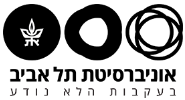EE Seminar: Fog classification based on commercial microwave links data
Speaker: David Tsidkiahu
M.Sc. student under the supervision of Prof. Hagit Messer Yaron
Wednesday, November 27, 2019 at 15:00
Room 011, Kitot Bldg., Faculty of Engineering
Fog classification based on commercial microwave links data
Abstract
There has been major progress in precipitation monitoring using commercial microwave links (CMLs) in the past 10 years, and currently it is considered as a complementary and even preliminary rain monitoring method in certain regions in the world.
While the effect of rain on the received signal level (RSL) in CMLs is distinguishable and the extraction of rain characteristics is relatively easy, fog monitoring is challenging, since fog has less effect on the CML's RSL, often being in the same scale as noise.
This thesis presents a fully detailed description of two algorithms for detecting fog and classifying it into several acceptable metrological levels. The first is a two-stage cascade model-driven method, where the first stage handles detection and the second stage handle the classification task.
The second is a data driven, single-stage fog classification algorithm. I propose a machine learning algorithm, based on a known network called UNET, trained and tested only on synthetic events, which were generated by a simulator.
Finally, an error analysis was performed, based on real data as well as on simulated data. In the study, quantization noise and the wet antenna attenuation were found to be the most painful problems in the detection and classification task.

